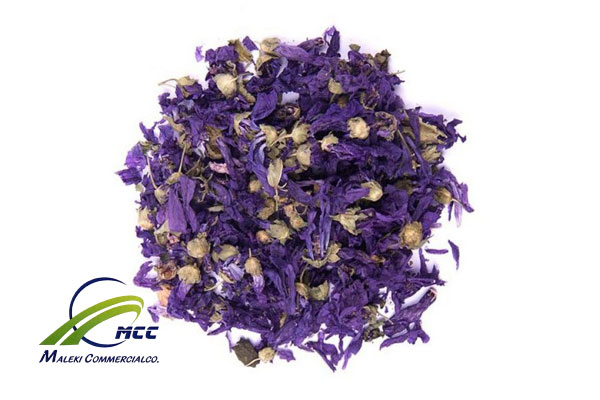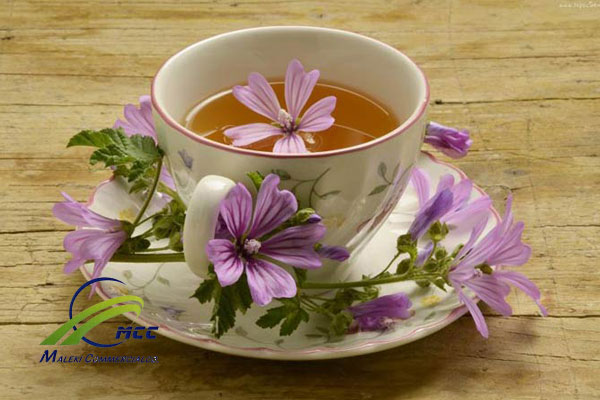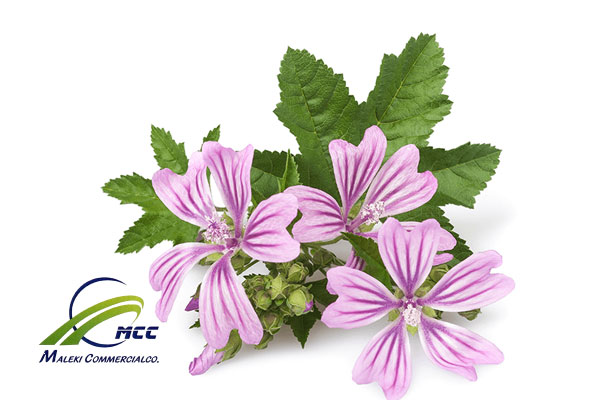What is common mallow?
mallow plant: Dried flowers of Malva sylvestris L. plants belong to Malvaceae family.
Botanical characteristics of common mallow
A biennial herbaceous plant, covered with simple or divided trichrome, round and alternative leaves, flowers are bright blue to purple in color.
Chemical composition of common mallow
It contains a scale of mucilage, color compound called Malvine witch is decomposed to glucose and Malvinine through hydrolysis process.
L-Rhamnose, L-Arabinose and D-galactronic acid are among some other compounds within common mallow flowers.
 Common mallow names
Common mallow names
- Scientific names: Malva Sylvestris L
- English name: Common Mallow, Marsh Mallow, Blue Mallow
- German name: Wild Malve, Malve, Rossmalve
- French name: Meule, Mauve Sauvage, Grand,Mauve
- Arabic name: Khabbazi, Al-dohma
- Indian name: Khobazi, khobaji
- Persian name: Panirak, nan kalagh, khtmi koochak, outpar-fochaku, pechku, kookar, pin direh
- Traditional medicine name: Khobbazi, melokhia, khiro
Geographical distribution of common mallow
Global distribution
Europe, Southwest Asia, Mediterranean regions
Iran geographical distribution
It grows in Mazandaran, Isfahan, Gorgan, Khorasan, Tehran, Kordestan, Hamedan, Yazd, Kerman and Fars provinces.
 Medicinal and therapeutically properties of common mallow
Medicinal and therapeutically properties of common mallow
- Relaxation
- Chest softener
- Uterus tonic
- Intestine pain and irritation
- Throat and pharynx edem remedy
- Lung infection treat
- Cold and pertusiss treat
- Urinary path disease remedy
- Urinay bladder mocous layer infection treat
Common mallow global export
Maleki commercial is the biggest global exporter of mallow plant with highest active substances, best quality and price among all exporting companies. This big commercial has gain an incredible success in offering this medicinal genus to different countries directly.
If you need this precious high quality plant, you can order standard and confident packages with high level of trust.
